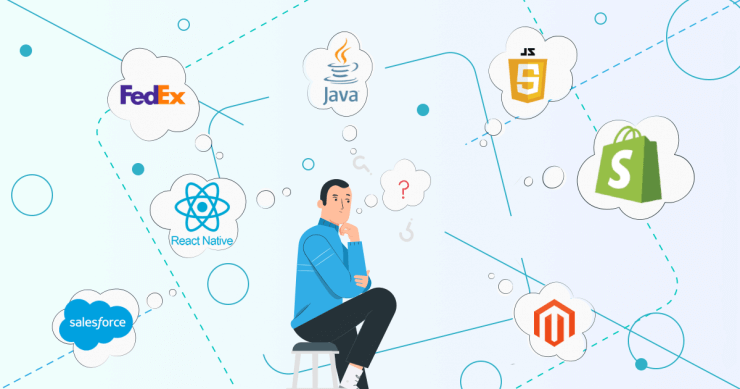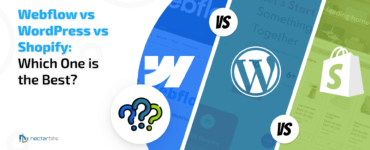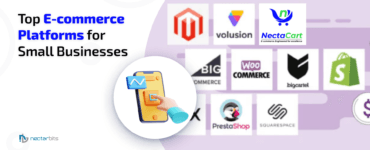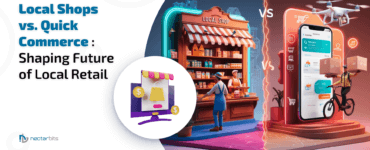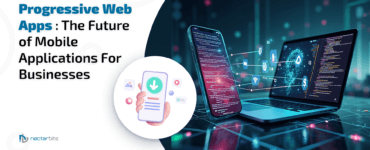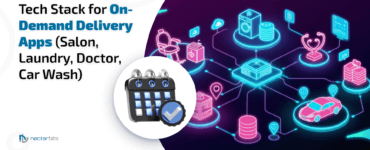The world has nearly bid goodbye to the brick-and-mortar purchase. That’s why the retail stores which have not extended their services with Ecommerce stores are standing on the verge of extinction. The retailers that have adopted the E-commerce model, ecommerce stack and re ruling the world with users, sales, and ROI millions.
Technology has played a vital role in store digitization and making the users rave after E-store options. Presently, you will barely find people not using the best technology stack for ecommerce website services because they have enabled them to order and get everything from the comfort of the couch.

Choosing an Ecommerce Technology Stack
This is the reason the rookie players or start-ups are trying their hands in the Choosing a Technology Stack for E-commerce Websites. E-commerce market to earn a good share of online commerce. It’s a good idea, as still there is huge room for innovation. However, the unique idea is not enough. The decision for technologies is a cardinal aspect of ecommerce technology stack diagram store development, where most entrepreneurs get confused.
Well, you might be thinking that partnering with an eCommerce development team would work. It will, but having in-depth knowledge beforehand is all-important to not get trapped by mischievous developers. Realizing the need, we have got your technology-related needs covered in the blog in different sections.
What Is Choosing a Technology Stack for E-commerce Websites
Ecommerce Technology stack is a combination of frameworks, tools, apps, platforms, and programming languages employed to develop a website or a mobile application.
Let’s dive in!
The Types Of Ecommerce Development
The first subheading may have confused you, but it’s true. According to budget and business needs, three types of Ecommerce stores can be created. Let’s dig deeper to know which type of Ecommerce development company matches your business’s online commerce needs.
New Technologies used in E-commerce:
- Shopping Cart Software
It includes- the businesses that are already having a website and just want to add a product catalog and checkout option with a couple of extensions and plugin integration. The software provides a virtual storefront, limited merchant tools, and payment gateways with a little degree of customization at a fixed price.
Read More: iOS or Android – What to Start from?
On the flip side, the businesses opting for this software can never scale the store, and no responsive design is available, which means you will be losing mobile traffic.
- Ecommerce Software
It’s a white-label solution that provides a range of templates for eCommerce design, marketing tools, and hosting facility, ensuring security with robust code, marketing tools, and CMS to deliver a great user experience. Besides, the responsive themes, custom modules, and personalized design can also be implemented at an additional fee that allows the businesses to catch maximum eyeballs and retain them.

- Custom Ecommerce Software Development
It’s less often considered because such type of store is built from scratch. The businesses decide the navigation structure, store flow, products to add, checkout process, front-end designing, back-end, architecture, and pretty more. The custom e-commerce stores are completely under the control of entrepreneurs’ hands and changes can be incorporated at any time with a great length of customization and scalability. Moreover, you can get technology stack of website.
However, the readymade plugins, extensions, and tools can be used to make the ecommerce App development plain-sailing. Custom development is a time-expensive and costly endeavor, which generally the businesses with deep pockets prefer. Amazon, eBay, Walmart, Alibaba, and others are great instances of it.

The Best Technology Stack for Ecommerce
Mainly, the entrepreneurs have to ponder and make decisions judiciously on front-end technologies, back-end technologies, and third-party services to make the ecommerce shop technology stand high on the performance ladder. Take a glance at them individually:
- Front-End Technologies
The front end is, in reality, the front face of the company that forms a perception about business, that lasts forever. The design should be optimal, give a clear understanding of the offerings, and load at speed to reduce the bounce rates and increase conversion by a great margin.
When the website pages load at speed and the design is responsive, the probability of getting higher ranks in search engine results will surge. To preview the future look and feel of the websites and know about their performance, building a prototype is a good choice. Select the technologies you want to use and then move ahead with a prototype and later with an enhanced version of the prototype.
- Back-End Technologies
The complete friction from the development can be removed using ecommerce shop tech platforms such as Magento, BigCommerce, Shopify, and others that allow businesses to execute complex functions like- CRM, mobile commerce, inventory management, and web designing through readymade customizable packages.
The backend hides the ugly reality of the website and showcases everything in an elegant form to the users. For instance, the product added to the catalog, order management, website page editing, user registration, transactions, SEO setting, and more is handled from the back-end.
Read more: The Complete Guide to Programming Applications for Android
Third-Party Services
It’s a brainer to code and builds functionalities that are easily available in the easy-to-integrate form. The myriad of the integrations such as social channels, payment gateway, analytics tools, shipping modules, CRM, and the marketplace can be done in the eCommerce store to not reinvent the wheel at the place where it’s not required.
Social Channels: Using social platform APIs, Facebook, Twitter, LinkedIn, Snapchat, or Instagram integration is feasible.
Payment Gateways: Stripe, PayPal, Braintree, and Authorize.net are some of the popular gateways that eliminate the need to manage the transactions and store data while rendering the best checkout experience.
Analytics Tools: KISSmetrics, Piwik, Hotjar, and Woopra are well-famed analytics tools that inform the business about ecommerce website performance and illustrate the points that are negatively impacting customer experience and sales and the content that’s engaging the customers.
Shipping Modules: Shipping Easy, FedEx, ShipStation, and others are a couple of user-friendly shipping modules that can be easily integrated with various eCommerce platforms and enable seamless shipping management.
CRM: Salesforce, Zoho, and Microsoft Dynamics are the popular CRMs for seamless customer relationship management.

TheModern Platforms You Can Choose From
Building the front-end and back-end from scratch by an in-house development team is a laborious and expensive affair. Also, the self-built approach makes the Ecommerce unscalable, difficult to integrate with other software, and changes implementation is quite a task.
The complete friction from the development can be removed using eCommerce platforms such as Magento, BogCommerce, Shopify, and others that allow businesses to execute complex functions like- CRM, mobile commerce, inventory management, and web designing through readymade customizable packages.
Leveraging e-commerce platforms, the businesses will get the store set up and maintenance services to sell the products glitch-free. The centralized inventory management and order management across various sales channels help in driving conversion. The store can be made comprehensive with advanced SEO, multichannel retail, and marketing-related third-party apps integration.
With responsive web design and personalized customer experience, the brands can create a distinctive position in the niche market. The agility to reflect changes and scale the store as the business grows is phenomenal with Ecommerce platforms.
Taking a step ahead, when it comes to hosting the ecommerce shop tech, the eCommerce platforms also facilitate hosting the store on the local or cloud-based servers, in addition to extended technical support and maintenance services. Either at a subscription fee or annual fee, the hosting services are provided that lower technical barriers to new entrants.
The Essential Features You Should Not Overlook
Some basic features receive the highest attention from new players to the top honchos in an online commerce landscape. It includes- a shopping cart, product catalog, customer profile, payment, and order management.
As the businesses progress, they give credence to advanced features such as multichannel plugins, CRM integration, social integration, product reviews, live chat, loyalty programs, on-site search, email marketing, wishlist, and recommendations. Well, the longer the list of advanced features, the higher the Ecommerce development cost will become.
When the successful online stores’ features are analyzed, they implement a few more useful functionalities to enhance the store usability and take the user experience to a whole new level. Search result suggestions, product customization facility, product’s video demo, 360-degree product view, AI chatbots app development, voice commerce, personalized loyalty programs, FAQs, animated shopping cart, and abandoned cart recovery are names to few.
Conclusion
Nectarbits tech ecommerce websites companies for eCommerce app development solution, but not everything because technology is embraced to help businesses accomplish their goals and objectives.
At first, narrow down the list of features and functionalities you want to implement in the store, decide your budget for development, identify the set of technologies that can be leveraged, and then select the eCommerce platform to build a full-fledged eCommerce store that allows you to compete and seize an edge in the fierce competition. Good luck
People also ask (FAQ)
It is an amalgamation of tools, applications, frameworks, platforms and programming languages. All these combinations are used to develop a website or mobile application.
This depends on your choice whether you are simply testing out a business idea or you want high performance.
eCommerce relies on a variety of technologies to facilitate online transactions and enhance user experience. Key technologies include eCommerce platforms (like Shopify, Magento, and WooCommerce), payment gateways (such as PayPal, Stripe, and Square), and content management systems (CMS) for website management. Additionally, customer relationship management (CRM) tools, enterprise resource planning (ERP) systems, and marketing automation platforms play essential roles in streamlining operations and improving customer engagement.
Payment processing in eCommerce involves several steps: when a buyer makes a purchase, their payment information is securely transmitted through a payment gateway. This gateway encrypts the data and sends it to the payment processor, which communicates with the buyer’s bank to verify funds. Once approved, the payment processor returns a confirmation to the merchant, completing the transaction. This process ensures security and efficiency in handling sensitive financial data.
Web hosting is critical for eCommerce sites, as it determines how and where the website is stored and accessed. Reliable hosting ensures that the online store remains accessible, fast, and secure. Different hosting options include shared, VPS (Virtual Private Server), and dedicated hosting, each offering varying levels of performance, scalability, and security features tailored to the needs of the eCommerce business.


